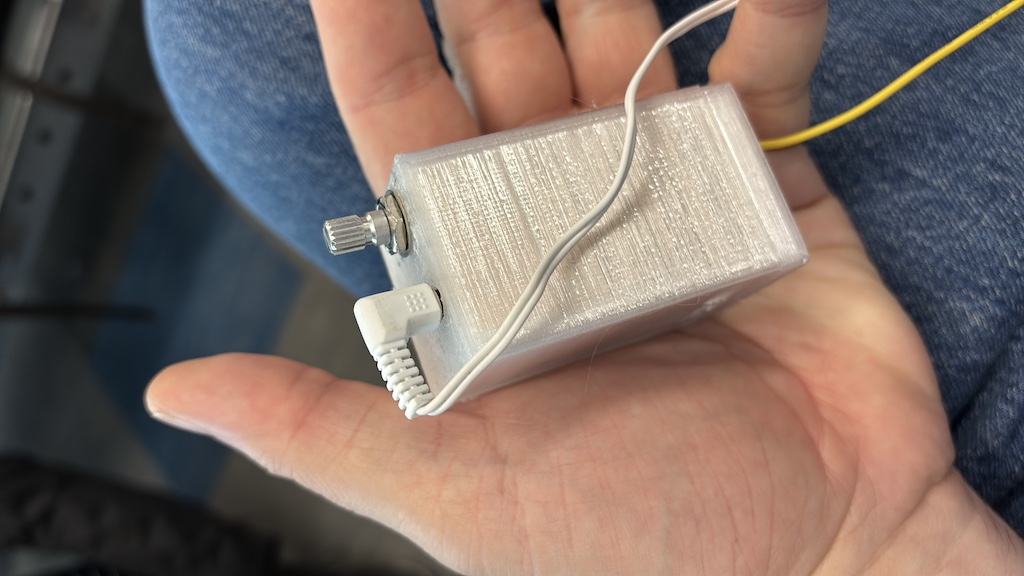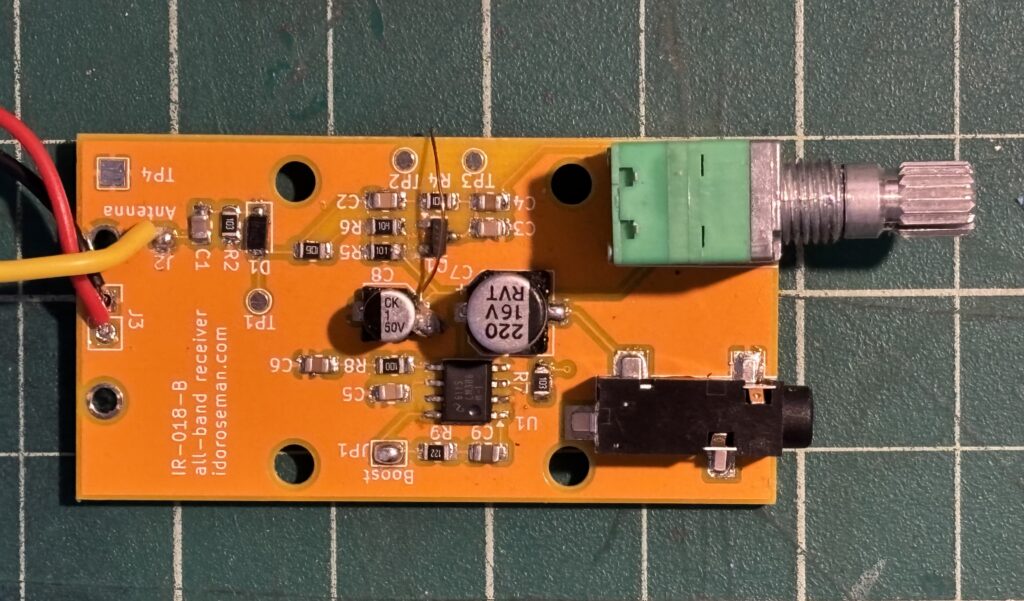In the world of aviation, communication between pilots and air traffic controllers is crucial for safe and efficient operations. For aviation enthusiasts & radio hobbyists, listening in on these transmissions can be fascinating and insightful for many reasons,
While it may be tempting to use a simple off-the-shelf walkie-talkie style receiver or scanner to listen in on air traffic communications, doing so in or near an airport can be problematic. More importantly, airport security and aviation authorities generally view the use of such devices with suspicion. In some cases, they may even be prohibited in certain areas of an airport due to concerns about security and interference with official communications. even if your intentions are pure and have the proper equipment, trying to explain that to a concerned security officer can turn to be a headache.
enter the All Band Receiver.

So Why Listen to Airplane Communications?
Staying Informed In certain cases, listening to ATC can give you important information, such as weather updates or changes in flight paths, that might be relevant for your travel or outdoor activities. Some aviation enthusiasts even tune into emergency transmissions to monitor critical situations.
Educational Insights Listening to live communications can provide a fascinating educational experience. You can learn how air traffic controllers manage aircraft in busy airspaces, the procedures involved in managing takeoff and landing, and the way pilots follow instructions in real time.
Engaging Hobby Many radio hobbyists and enthusiasts enjoy listening to aviation communications as a pastime. The unpredictability of air traffic and the variety of communication scenarios make it an interesting and dynamic activity. If you’re in an area near airports, you’ll hear transmissions throughout the day.
While listening to aviation frequencies is fun, there are some important considerations to keep in mind:
Local Regulations: Make sure to check any specific local laws regarding the use of scanners and receivers. In some countries, there may be restrictions on scanning certain frequencies.
Privacy and Security: Do not use the information you hear for any illegal or disruptive purposes.
No Interference: You cannot interfere with communications or attempt to broadcast on the airwaves.
The last hurdle is tracking down all the frequencies used by different airports can be quite a cumbersome task. Each airport has its own set of communication channels, which can include frequencies for ground control, tower communication, approach and departure control, weather briefings, and emergency services. These frequencies may also change over time, requiring frequent updates to your list. For larger airports, the number of frequencies in use can be staggering, and some may even have different frequencies for specific runways or airspace sectors. Additionally, different regions and countries can have variations in their air traffic communication systems and frequency allocations.
Manually compiling a complete and up-to-date list of frequencies for all the airports you wish to monitor can involve a lot of research. You’ll need to check official airport charts, online databases, and sometimes even local government resources to ensure the frequencies you’re using are still active and relevant. This is time-consuming and can be especially frustrating when frequencies change or are reallocated without public notice.
having all that in mind, I came across an article about an All band receiver. all-band receiver is a type of radio receiver capable of tuning into a wide range of frequencies across various bands. Unlike traditional radios, which are typically limited to certain frequency ranges (AM, FM, or shortwave), all-band receivers are designed to cover everything from long-wave to high-frequency bands. This includes the aviation bands, which are typically between 118 MHz and 137 MHz, used for communication between pilots and air traffic control (ATC).
In technical terms, it’s basically a diode detector followed by a high-gain audio amplifier, which makes it safe to use without a risk of spurious harmonics or any other emissions from the (non existent) local oscillator. the down side is that the signal needs to be very strong to be detected. that means I should be physically very close the the transmitter to hear anything. in our case, I could hear the pilot, but not the ground station (pilot usually acknowledge what was communicated to them, so you can get the gist). you can also hear any other electro-magnetic energy such as atmospheric cracks, cell phones (not switched to flight mode) searching for a tower and engine roar, among others. if you’re at home you might want to try things like car remote key fobs or your microwave oven.

so I’ve quickly sketched up G7VAK’s version of the circuit and sent the pcb for production. it arrived a couple of weeks before my planed christmas vacation, so I’ve assembled the components and printed a simple case. could not wait until I could try it out.
even while at the gate I could hear pilot talking as well as digital signals such as ADSB and ACARS.
When finally got on an airplane I was very happy with this little gadget. unlike “normal” receivers. background noise is very minimal and no squelch is needed. I might even say it masks nicely the engine noise and I was able to stay with the headphones throughout the flight. just don’t expect any rug chewing. these are very busy people, so communication is kept at a minimum like altitude changing or headings, but you might get the heads up on avoiding bad weather, occasional close by airplanes, or what’s going on at the gate.
here are some examples. of course the most interesting parts happened at random while i wasn’t ready with my phone… but i tried to record during landings, when there is more communication going on.
Next modification is eliminating the need for a dedicated wire to act as antenna. many of your 80’s walkman used the earphone ground wire as antenna by using an inductor to block RF from ground while allowing the audio signal to have a ground return and a ferrite beads provide a low-impedance audio path and a high-impedance RF path between the headphone amplifier and the headphone.
Note 2025-04-10: The earphone hack didn’t work, and sensitivity was really bad. I’ll have to do some more research when I have time since it’s a cool feature. for now I use a 60cm wire as an antenna.
if you like to buy a set and try it for yourself, send me a line in the comments go to my online store!

note 2025-01-12: after appearing on hackaday.com i got a huge amount of requests for the pcb which I wasn’t expecting. i’ll be making more of them and sell them online in a few weeks. if you prefer the DIY route, all files can be found on github
Update 2025-03-03 the online store is now open if you want to purchase a set
Hi there !
I am interested in buying a set.
Hi, I am looking for something similar. Not to listen to communication, but simply to monitor “all possible” RF traffic around, convert it into an audible signal, and synthesize music from it. This is actually part of my son’s university project (sound design), and I want to help him with the hardware part. Would you be so kind as to share the design? Thank you.
“While it may be tempting to use a simple off-the-shelf walkie-talkie style receiver or scanner to listen in on air traffic”
Why not use something like HRD-767 which is just pocket all band receiver? It’s smaller, utilizes headphones as antenna and looks less suspicious than your (really nicely executed) project. I’m not into radios so just asking.
ps.
while googling for the reference number of that HDR I ran on Airband Radio Receiver (referred as F908M in wallmart) which uses dial tuner like your project but looks ugly.
How much does it cost and can I also get the circuit diagram?
This is awesome. I built the Ramsey AR1 from a kit a decade or so ago for the same purpose and the issue I ran into with that kit is that it’s a way more complicated circuit, and despite being more sensitive in theory, you still aren’t hearing ATC, but are hearing digital transmissions super loud.
I’d be interested in a board. I think generally a small external antenna is preferable to me because I generally prefer to use one of these things with something like an airfly bluetooth adapter.
Hello, I’m interested in buying one.
Thanks.
Looks like a fun project. How much to buy one?
Great project. I’d be interested in one myself. Please let me know where to get one. Thanks!
Interested in trying out your receiver. Send info to acquire.
I would love to build one of these! Sounds like a fun project!
What a fantastic concept. I would be interested in a kit.
Curious about this little receiver.
hi there,
how much its cost single unit.
Great idea!! A little beyond my skillset to build from diagram. How much are you selling your kits for?
Count me in!
I am interested in buying a set
I would be interested
I would like to get a kit.
Interested would make a nice project
Hi there. It’s been a very long time since I’ve soldered, etc. This though, has piqued my interest. I’m intrigued and would like further information please. Cheers
I’d like additional information about this receiver.
I’d like to buy a set.
I like to buy one
I’d love a go at this! I’m interested in buying.
If it picks up 137MHz to 138MHz then count me in
I’d like one. It’s cool AF.
Sounds great to me ,I am on board
Cool! Please add me to the list for a kit.
Hi i am interested in buying one
I think your design is very good. I want one!
Can you post the schematic, Gerber files and parts list?
I’m sure you’ve got a lot of friends right now!
I’d be interesting in one as well.
Interested in a kit radio
It seems very interesting.
May I know some more details please?
Thanks and 73
I like this all band schematic
I would like to buy one a completed set, no matter how much it cost. Please let me know.
i’m still not sure how to price it. what would be a reasonable price for you ?
Interested in buying one
I would like to either buy a kit/PCB or obtain a circuit diagram of the receiver. Is this possible. Bill
documentation can be found on the github page. I’m starting production of more units, will send an email when available
Fascinating! Interested in kit, PCB or finished product.